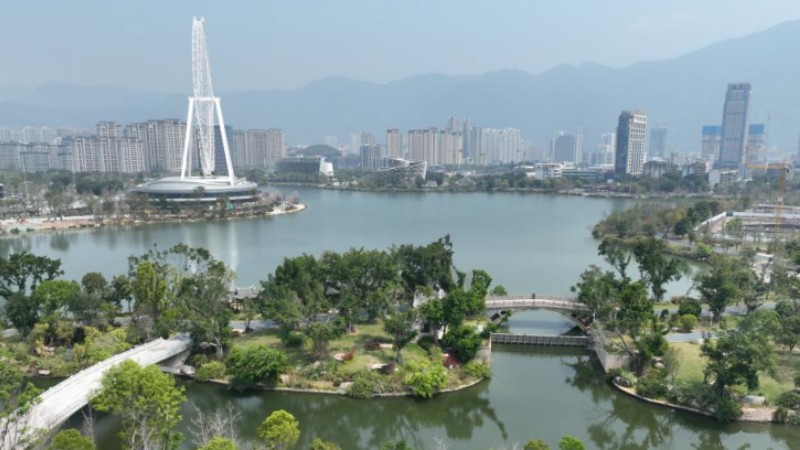At least 14 provincial-level regions in China record increasing population in 2022 despite nationwide declining trend: data
More than 20 provincial-level regions in China have released their 2022 local population data, with at least 14 recording increases in the number of permanent residents.
Experts said that change in population in one place will rely more on the movement of migrant workers rather than natural birth, encouraging provinces and regions to boost local industrial development and make full use of their local advantages to attract labor, especially top talent.
Most of the 14 places that had an increase in the permanent population are located in eastern and southern China, including East China's Zhejiang, Jiangsu and Anhui provinces and South China's Hainan Province.
Among them, Zhejiang topped the list with an increase of 370,000 permanent residents. There was an increase of more than 100,000 in Central China's Hubei, East China's Anhui, Jiangxi and Jiangsu as well as Guangxi Zhuang Autonomous Region, according to media reports.
Population in the Chinese mainland declined for the first time in 61 years in 2022, decreasing by 850,000, data released by the National Bureau of Statistics of China showed in July 2022.
Places in the Yangtze River Delta region, the Pearl River Delta region and the Beijing-Tianjin-Hebei region are the three main destinations for migrant workers in China, Zhai Zhenwu, president of the China Population Association, also head of the Population Development Studies Center at Renmin University of China, told the Global Times.
But in recent years, these places have promoted industrial upgrading and reduced their demand for low-end labor, so it is not surprising to witness a decline in inflows of migrant workers to these places, Zhai said.
The data in Beijing showed that the number of permanent residents in the capital stood at 21.8 million at the end of 2022, down by 43,000 compared with the year before, the Beijing statistical authorities announced on Tuesday.
Beijing has been deliberately controlling its permanent population scale since 2014. Under this strategy, the capital will no longer pursue a numerical increase in labor inflows but in their quality, Zhai explained, noting that the demand for labor in one place is closely related to the local economic development level.
Such changes in labor demand will bring about a competition among local enterprises and governments, pushing them to enhance the local salary level, improve the local environment and offer preferential policies to attract talent, analysts noted.
The latest data in Beijing revealed steadily rising incomes in 2022 with the per capita disposable income of the city's residents reaching 77,415 yuan ($11,266), an increase of 3.2 percent over the previous year.
The per capita disposable income of rural residents increased by 4.4 percent, 1.3 percentage points more than that of urban residents.
China has relaxed COVID restrictions and has been undergoing a comprehensive economic recovery since the beginning of 2023, so the population data for this year probably could be more positive, Yuan Xin, a professor from the Institute of Population and Development at Nankai University's School of Economics, told the Global Times on Thursday.
As China is accelerating the implementation of the rural vitalization strategy and promoting the development of small cities and townships, Yuan said that some migrant workers would be able to find satisfactory jobs in or near their hometowns rather than moving across the country.
Jiangxi, a province that used to witness large population outflows, serves as an outstanding example in retaining labor and talent by developing its own advantages.
In 2021 the province's permanent residents decreased by 14,600. In 2022, the number of permanent residents in the province increased by 105,800, among which 11,000 came from natural growth and the other 94,800 from population inflow.
The situation is similar in North China's Inner Mongolia Autonomous Region as permanent residents decreased by 28,000 in 2021 but increased by 11,700 in 2022, among which 65,700 came from the migrant population.
Jiangxi in recent years has given full play to the advantages of strategic resources, such as rare earths, lithium mines. It has also performed well in cultivating new energy industries so that can provide more jobs. As for Inner Mongolia, in addition to animal husbandry, the region has also attracted more migrant workers due to the layout of energy bases and the Eastern Data, Western Computing project, industrial analysts explained.
In the regional structure, industrial division of labor and the number of jobs are the key factors affecting the transfer of working population. The attractiveness of a place depends on the quality of jobs and public services in the area, analysts noted.
Photos
Related Stories
- China's population fell by 850,000 in 2022 but 'labor resources still abundant'
- National political advisor to propose opening egg-freezing to preserve single women's fertility
- Cities roll out incentives to boost birthrates
- Population in Hainan up by 65,600 in 2022
- Shenyang in NE China's Liaoning to subsidize $72.9 per month to local families with a third child until 3 years old
- Nation's population drops for first time in 6 decades
Copyright © 2023 People's Daily Online. All Rights Reserved.









